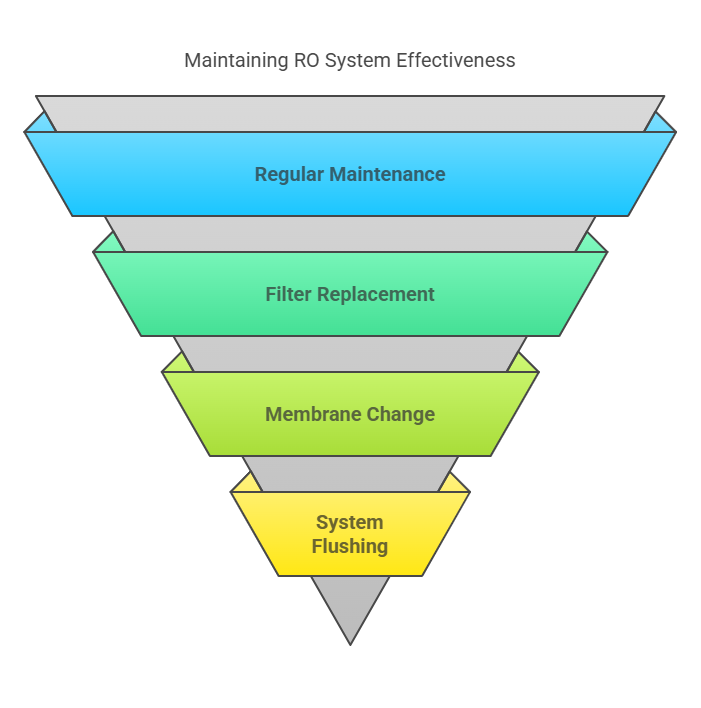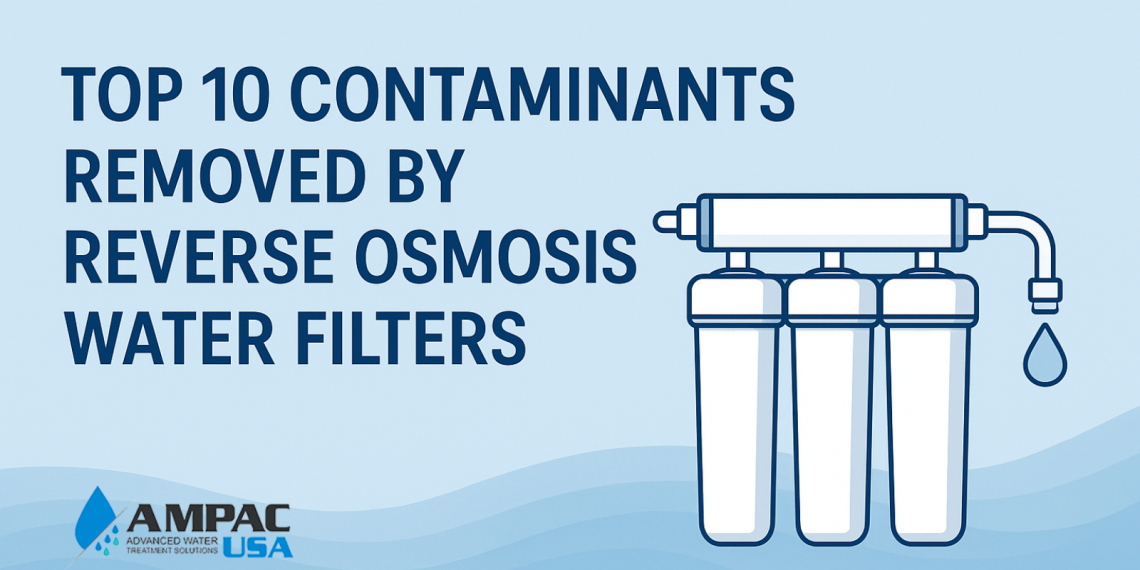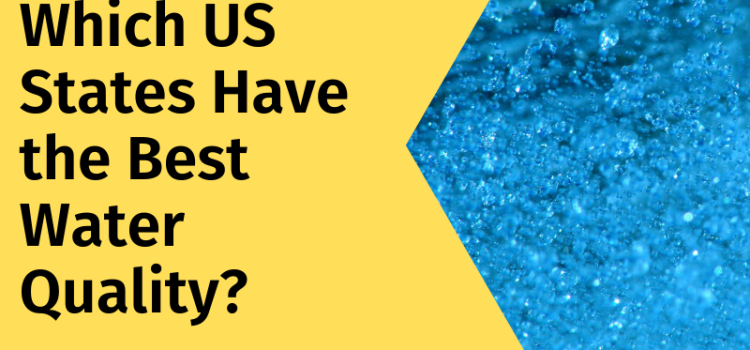Last updated on December 11th, 2025 at 06:19 pm
Reverse osmosis filtration is one of the most effective methods for purifying water available today. It is widely adopted for both residential and industrial use due to its exceptional ability to eliminate a broad spectrum of impurities. The RO system forces water through a semi-permeable membrane, allowing only clean water molecules to pass while trapping harmful substances. Combined with activated carbon filters and carbon filtration, reverse osmosis systems provide clean safe drinking water that often surpasses the quality of bottled water.
In this article, we explore the top 10 contaminants that are commonly removed by reverse osmosis systems, ensuring your water supply is not only safe but also pleasant in taste and odor.
- Lead
Lead is a toxic heavy metal often found in plumbing systems and aging water utility pipelines. Even exposure to small amounts of lead can cause severe neurological and developmental problems, especially in children. A reverse osmosis filter is highly effective at removing lead, reducing its concentration to undetectable levels. If you live in an older home or have concerns about your water source, it’s crucial to have your water tested regularly and rely on RO technology to keep it lead-free.
- Chlorine and Chloramines
Municipal water utilities commonly use chlorine and chloramines for disinfection. While effective at killing bacteria, these chemicals significantly affect water quality, contributing to an unpleasant taste and odor. More concerning, they can react with organic matter to produce harmful disinfection by-products. Activated carbon filters, used in combination with RO membranes, remove chlorine and reduce chloramines, greatly enhancing the flavor and safety of drinking water.
- Fluoride
Fluoride is often added to public water supplies to promote dental health. However, excessive fluoride exposure has been linked to skeletal and dental fluorosis. Unlike standard carbon filtration, reverse osmosis membranes can reduce fluoride levels by up to 95%, providing a safe alternative for individuals seeking fluoride-free water.
- Arsenic
Arsenic contamination is particularly common in groundwater across several regions. As a known carcinogen, arsenic poses significant health risks over prolonged exposure. RO systems are effective at removing both arsenic III and arsenic V, making them essential in areas where natural deposits or industrial runoff threaten the water supply.
- Nitrates and Nitrites
Derived from agricultural fertilizers and septic systems, nitrates and nitrites can infiltrate drinking water and cause health complications, especially for infants, such as methemoglobinemia or “blue baby syndrome.” These contaminants are difficult to eliminate with basic water filters, but reverse osmosis systems are engineered to remove them with high efficiency, ensuring clean safe drinking water even in farming-dense regions.
- Volatile Organic Compounds (VOCs)
Volatile organic compounds are industrial solvents and chemicals found in fuel, paint, and household cleaners. They can leach into the water supply from industrial waste and landfill sites, causing cancer and liver damage with long-term exposure. Advanced carbon filtration and RO membranes work in tandem to remove a wide array of VOCs, making the reverse osmosis filtration process one of the best defenses against chemical contamination.
- Pharmaceuticals and Hormones
Studies have shown trace amounts of pharmaceuticals and hormones present in municipal water due to improper disposal and human waste. These micro pollutants, although found in minuscule quantities, can disrupt endocrine systems and have long-term health implications. RO systems, complemented with activated carbon filters, are among the few solutions that can significantly reduce these emerging contaminants.
- Pesticides and Herbicides
Runoff from agricultural lands introduces a variety of synthetic chemicals into groundwater and rivers. Substances like glyphosate and atrazine can persist in the environment and accumulate in drinking water supplies. Reverse osmosis filtration effectively removes various contaminants, including pesticides and herbicides, which standard water filters often overlook.
- Heavy Metals (Cadmium, Chromium, Mercury)
Besides lead, other heavy metals such as cadmium, chromium, and mercury can enter the water supply through industrial discharge, mining operations, or natural deposits. These metals pose various health risks, ranging from kidney damage to cancer. A reverse osmosis water filter effectively reduces harmful substances, ensuring clean water as a reliable long-term solution.
- Total Dissolved Solids (TDS)
Total dissolved solids refer to the combined content of all inorganic and organic substances in water, including salts, minerals, and metals. While not all TDS are harmful, high levels can lead to poor water quality and scaling in plumbing fixtures. Reverse osmosis systems reduce TDS effectively, delivering water that is purer, better tasting, and more suitable for sensitive applications like cooking and baby formula preparation.
Importance of Regular Maintenance and Filter Replacement
The effectiveness of a reverse osmosis water filter depends on regular maintenance and prompt filter replacement. Over time, membranes and carbon filters become saturated and less effective, allowing contaminants to pass through. Monitoring the lifespan of each component in your RO system ensures consistent water quality and extends the longevity of the system.
We recommend:
- Replace the pre-filters every 6 to 12 months.
- Changing RO membranes every 2 to 3 years
- Flushing the system regularly to prevent microbial buildup
- Timely servicing not only preserves system performance but also guarantees that your household continues to enjoy clean safe drinking water year-round.

How Reverse Osmosis Compares to Bottled Water
Consumers often turn to bottled water as a quick fix for water concerns. However, bottled water is costly, generates significant plastic waste, and may not always be subject to the same rigorous testing as municipal water. By contrast, installing a reverse osmosis filtration system at home delivers better water quality at a fraction of the cost. It is a sustainable, reliable, and long-term solution for those serious about their health and environmental impact.
Conclusion: Why Choose Reverse Osmosis?
Reverse osmosis systems offer unparalleled protection against a spectrum of contaminants—ranging from chlorine and VOCs to heavy metals and pesticides. Through a combination of carbon filtration and advanced membrane technology, they provide clean, safe, and great-tasting drinking water. For any household concerned about water quality, a reverse osmosis water filter is not just a luxury—it’s a necessity.
Whether you’re combating foul taste and odor, ensuring the safety of your family, or seeking an alternative to bottled water, investing in reverse osmosis filtration is a smart, health-conscious decision. Keep your water tested, stay on top of filter replacement, and enjoy the peace of mind that comes with knowing your RO system is effectively removing a wide range of contaminants from your daily water supply.











